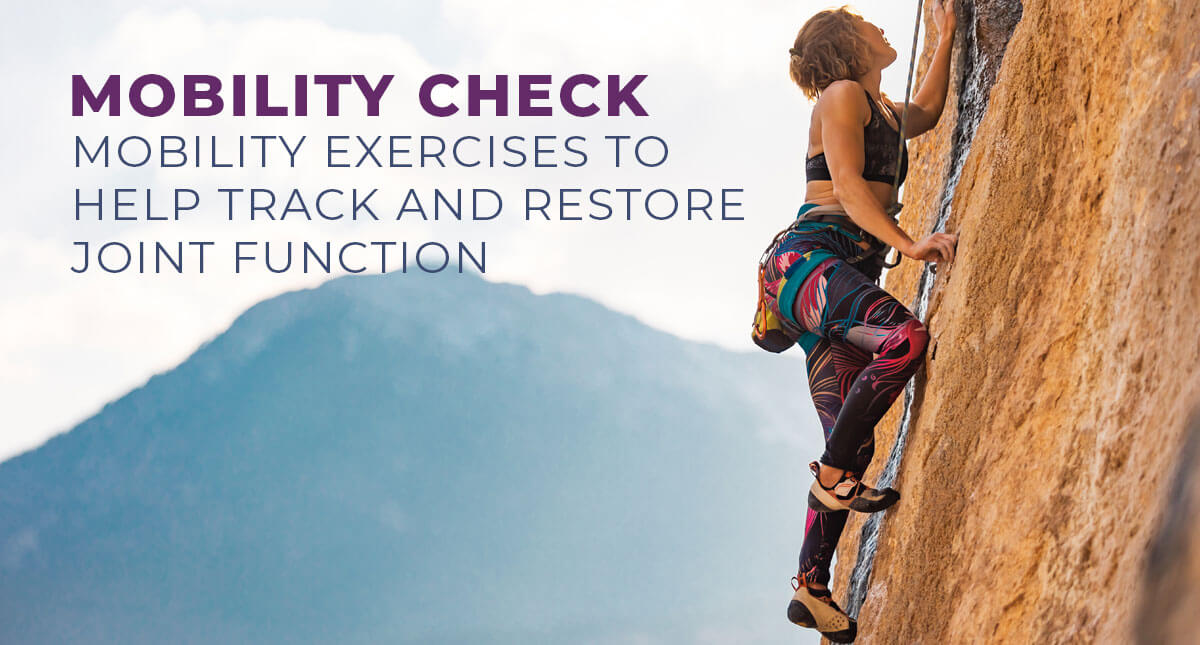Living with Joint Pain?
Take the first step toward relief.
Overview
Nearly 70% of Americans will experience pain in their limbs or joints this year, with shoulder pain and knee pain affecting 35% of the population. Chiropractic care treats joint pain, including shoulder pain, knee pain, ankle pain, and wrist pain.
Dr. Michelle Blanton | Chiro One of Oak Forest, IL
Did you know? 35% of people will experience shoulder or knee pain this year.
Symptoms ofJoint Pain
The most common symptoms of joint pain or joint disorders include:
- Pain, including aching, throbbing, sharp, or shooting pain
- Swelling or bruising
- Stiffness or limited mobility
- Warmth or redness
- Pain with movement or palpation
Is Your Joint Pain Chronic Pain?
Doctors categorize pain in these three ways:
- Acute pain: this is pain which comes on suddenly and usually lasts a few days to a few weeks (such as an active injury)
- Subacute pain: this type of pain can appear suddenly or over time, and has been presents 4 to 12 weeks (about 3 months) at the time of diagnosis
- Chronic pain may come on quickly or slowly, lasts longer than 12-weeks, and occurs daily – to the point of disrupting your life (such as arthritis)
Chiropractic care is effective for treating pain at all stages – acute, subacute, and even chronic pain.
Common Causes
Common Causes of Joint Pain
The most common causes of joint pain include:
Accidents & Injuries. These include dislocations, fractures, nerve injuries, tears to the ligaments or muscles, cartilage tears, and tendon injuries (such as tears or ruptures). These may include:
- Tears to the Rotator Cuff Tendon
- Separated Shoulder – and injury to the acromioclavicular (AC) joint where your collarbone and shoulder blade come together, often as the result of a collarbone injury
- Frozen Shoulder – where abnormal bands of tissue (adhesions) build up in the joint and keep your shoulder from moving freely
- Tears in the Meniscus – wedge-shaped pieces of cartilage which act as shock absorbers between your femur and tibia
Overuse. Microtraumas – tiny tears in muscle fibers, stress on a tendon, or bruising of a bone – can result from repetitively using the same parts of the body. Overuse injuries include:
- Carpal tunnel syndrome
- Epicondylitis (Tennis Elbow) – swelling of the tendons that bend your wrist backward from your palm
- Osgood-Schlatter disease – a painful bump and swelling on the shinbone below the knee
- Patellofemoral syndrome – pain at the front of the knee, around the kneecap, common to athletes
- Shin splints – pain and tenderness along or behind the large bone in the lower leg
- Stress fractures
- Tendinitis – inflammation of the tendon
Bursitis. Bursitis causes inflammation of the bursae, small sacs of fluid that cushion and lubricate the joints.
Fibromyalgia. A chronic disorder that causes pain and tenderness throughout the body, as well as fatigue and trouble sleeping.
Gout. Caused by high levels of uric acid in the blood, gout can lead to severe pain, swelling, and stiffness in the joints.
Postural Issues. Improper posture can affect the alignment of your body, causing your knees to twist or rotate improperly, leading to injuries or pain. Poor posture can also limit your mobility, leading to shoulder disorders and shoulder pain.
Arthritis. Both types of this condition (rheumatoid and osteoarthritis) cause pain and inflammation in the joints and can affect any joint in the body.
- Osteoarthritis is a degenerative condition resulting from wear and tear on the joint
- Rheumatoid arthritis is an autoimmune disorder unrelated to joint use
Risk Factors
Common Risk Factors for Joint Pain
While joint pain will happen to most people at some point in their lives, there are several factors that can put you at risk for experiencing joint pain or a joint injury:
Obesity is a Leading Cause of Joint Pain; Particularly Knee Pain
Inactivity Can Weaken Your Muscles, Providing Less Support for Your Joints, Making Them More Prone to Injury
Genetic Factors Can Put Some People At Higher Risk Of Arthritis, Gout, Or Other Inflammatory Conditions
Smoking makes you more likely to suffer both overuse and traumatic injuries and puts you at higher risk of low back pain and rheumatoid arthritis.
Pregnancy Can Cause Fluid Retention, Hormonal Changes and Structural Changes In the Body That Can All Lead to Joint Pain
Workplace Injuries Such as Overuse Injuries, Slip and Fall Accidents, and Injuries From Heavy Lifting are Common Causes of Joint Pain
When to Seek Treatment
When to Seek Treatment for Joint Pain
While we believe all pain should be evaluated, seek medical attention if your symptoms include:
- Severe pain or swelling
- Numbness or tingling
- Visible deformities of the joint
- Inability to put weight on the joint or move it through its full range of motion
- New symptoms from an old injury, including more swelling, instability in the joint, or a joint that is abnormal in another way
- Fever or nausea associated with an injury
Tips for Preventing Joint Pain
Regular physical activity protects your joint cartilage by allowing synovial fluid (the viscous substance that nourishes the cartilage) to circulate through the area around your joint during movement.
Make sure you’re using the correct technique and proper equipment, and gradually increase the duration and intensity of activity rather than jumping right in.
Take time to strength train and build muscle, be sure to warm up before any activity, and make stretching your muscles a regular part of your routine.
The right shoes can have a significant impact on your leg alignment and balance. Whether you’re working out or running errands, wear supportive shoes that fit correctly. Or try custom orthotics to get the support you need whichever shoe you choose.
Improper posture affects the entire body. Hunching or rolling your shoulders forward shortens the neck and shoulder muscles, limiting mobility, affecting your gait, and compressing nerves in your neck.
At Chiro One, we don’t believe anyone should have to live with pain. If joint pain is disrupting your life, chiropractic care from Chiro One can help. Learn more about how we diagnose pain, and what to expect at your first chiropractic appointments.
“Came with a left shoulder problem that had been bothering me for over a year. A few months later it’s completely gone…!”
– Jared J.
Find Relief with Help from Chiro One
Chiro One’s gentle chiropractic care delivers strong patient outcomes with exceptional levels of patient satisfaction. Here’s how Chiro One’s non-surgical, drug-free approach effectively treats the leading causes of joint pain:
Thorough Upfront Evaluations
To assess your physical health, understand your daily routine and goals
Gentle Chiropractic Adjustments
To relieve pain and improve joint mobility and function
In-Clinic Therapies
To help you build strength, improve your range of motion, flexibility and balance, anddevelop muscle memory for longer lasting results
New Patient Offer
Exclusions ApplyChiropractic Evaluation
- Diagnostic Exam
- Consultation
- Personalized Care Plan Recommendation


